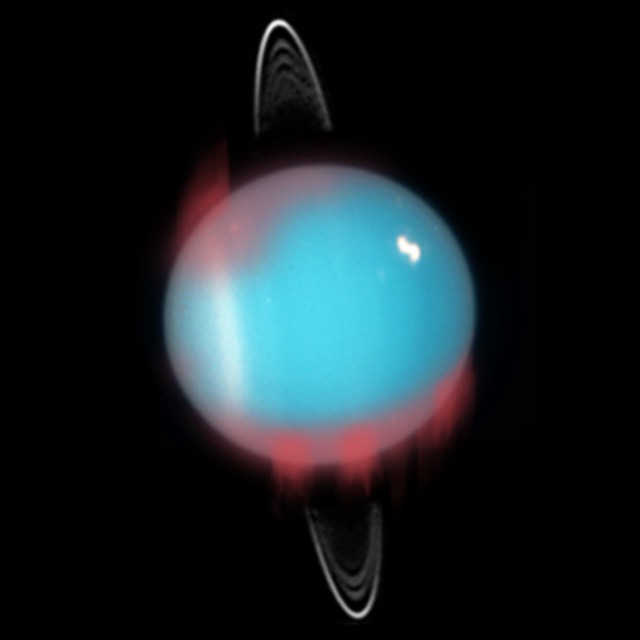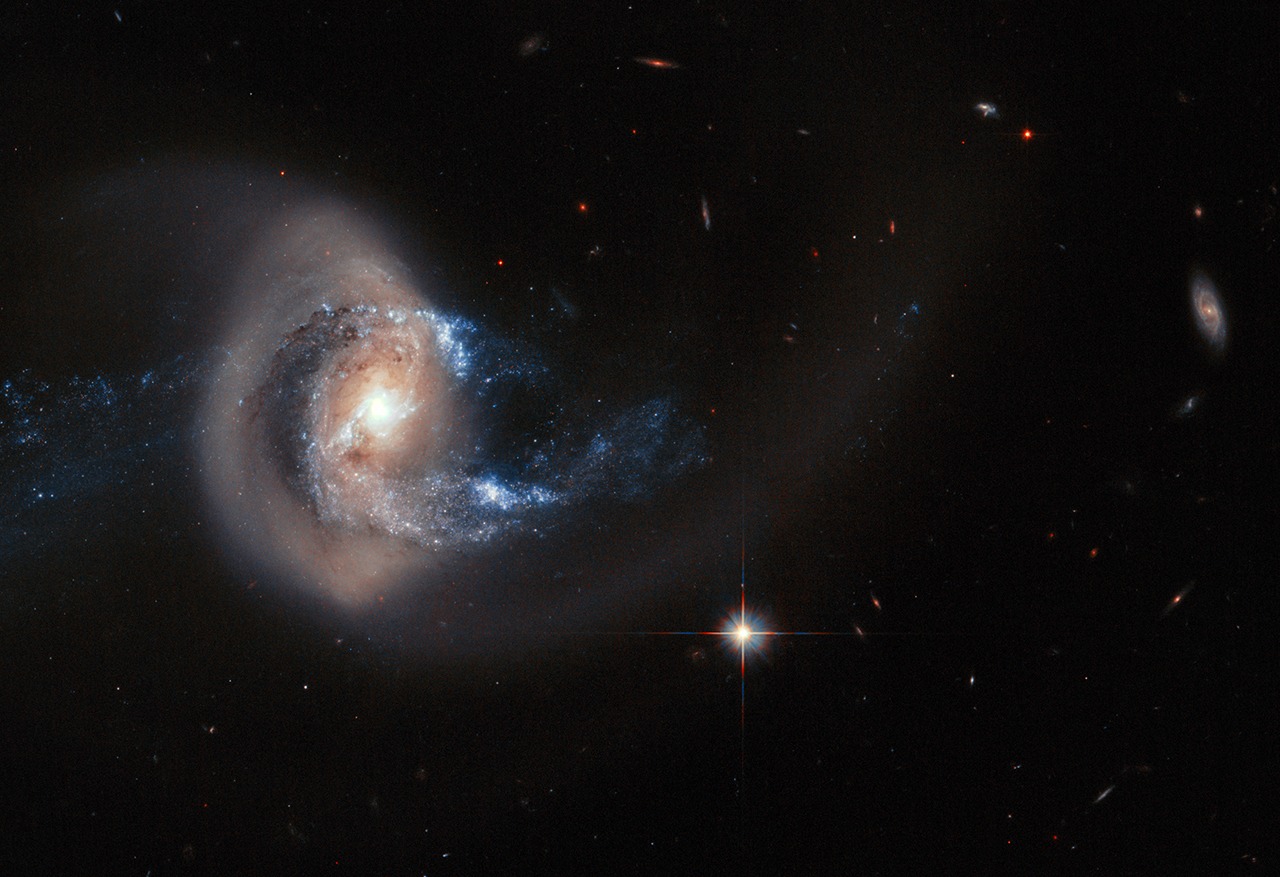FRIDAY, JULY 12
■ The Moon, just short of first quarter, shines west of Spica this evening as shown below, creeping toward Spica to occult it tomorrow. Plan ahead for your occultation watch!
SATURDAY, JULY 13
■ The first-quarter Moon occults Spica this evening for virtually all of North and Central America. The 1st-magnitude star will vanish behind the Moon’s dark limb, then will reappear from behind the bright limb up to an hour or more later. Rarely do we see the Moon occult such a bright star!

For observers near the East Coast the Moon will be getting low in the western sky (so plan a good observing spot beforehand). For much of the West the Sun will still be up — but Spica will probably be visible through the blue sky in a telescope, just not so easily.
In a dark sky, even your naked eyes might be enough to catch the disappearance depending on your vision and the clarity of the air.
Map and timetables. The first two tables, with predictions for many cities, are long. The first gives the times of Spica’s disappearance behind the Moon’s dark limb; the second its reappearance out from behind the bright limb (less observable). Scroll to be sure you’re using the correct table; watch for the new heading as you scroll down. The first two letters in each entry are the country abbreviation (CA is Canada, not California). The times are in UT (GMT) July 14. UT is 4 hours ahead of Eastern Daylight Time, 5 hours ahead of CDT, 6 ahead of MDT, and 7 ahead of PDT.
For instance: Use the first table to see that for Chicago, Spica disappears on the dark limb at 10:10 p.m. July 13th CDT, when the Moon is 19° high in the west-southwest (azimuth 234°). Spica reappears from behind the bright limb for Chicago at 11:22 p.m. CDT, when the Moon is only 8° high.
More info and pix: Catch an Exciting Spica Occultation on July 13th by Bob King.
SUNDAY, JULY 14
■ Uranus is in conjunction with Mars fairly low in the east before dawn on Monday morning July 15th. The two planets are magnitudes 5.8 and 0.9, respectively. Just before dawn Monday morning, use binoculars or a telescope to spot Uranus 0.6° to the north (upper left) of Mars.
The disk of Uranus is super-tiny, 3.5 arcseconds wide, but that’s enough to appear nonstellar at high power in a telescope if the seeing is even halfway decent.
Plan to start observing a little more than 2 hours before your local sunrise, to catch them at their highest before dawn gets under way.
MONDAY, JULY 15
■ Low in the northwest or north at the end of these long summer twilights, would you recognize noctilucent clouds if you saw them? They’re the most astronomical of all cloud types, with their extreme altitude and formation on meteoric dust particles. And they’re fairly rare — though becoming more common in recent years as the atmosphere changes. See Bob King’s Nights of Noctilucent Clouds.
TUESDAY, JULY 16
■ The waxing gibbous Moon shines low in the south-southwest after dark. Look less than a fist to its left for orange Antares. Between it and the Moon is the tall, vertical row of three stars marking Scorpius’s head.
WEDNESDAY, JULY 17
■ As summer progresses, bright Arcturus moves down the western side of the evening sky. Its pale ginger-ale tint always helps identify it.
Arcturus forms the bottom point of the Kite of Boötes. The Kite, rather narrow, extends upper right from Arcturus by 23°, about two fists at arm’s length. The lower right side of the kite is dented inward, as if some celestial intrusion collided with it. The head of the kite tilts toward the Big Dipper.
THURSDAY, JULY 18
■ Fourth star of the Summer Triangle. The next-brightest star near the Summer Triangle, if you want to turn it into a quadrilateral, is Rasalhague, the head of Ophiuchus. Face south not long after dark. You’ll find Rasalhague about equally far to the right of Altair and lower right of Vega.
The rest of big, broad Ophiuchus extends down from there. His dim feet stand almost on Scorpius.
FRIDAY, JULY 19
■ The nearly full Moon tonight shines in the handle of the Sagittarius Teapot. Cover the Moon with your fingertip to help reveal the stars near it.
SATURDAY, JULY 20
■ Full Moon this evening and Sunday evening. (The Moon is exactly full at 6:16 a.m. Sunday morning EDT, nearly splitting the difference between the two evenings.) Tonight the Moon shines low between the Sagittarius Teapot to its right and the dim boat shape of Capricornus to its left (which will be hard to piece out through the moonlight).
SUNDAY, JULY 21
■ The low Moon this evening forms a huge, nearly vertical line with Altair about three fists above it and Vega the same distance above Altair, near the zenith.
■ Look just a finger’s width at arm’s length above Altair for its eternal little sidekick Tarazed (Gamma Aquilae), a modest magnitude 2.7 compared to Altair’s showy 0.7. But looks are deceiving. Altair looks so bright because it’s one of our near neighbors, just 17 light-years away. Tarazed is an orange giant star about 380 light-years farther in the background — and 170 times more luminous than Altair!
This Week’s Planet Roundup
Mercury at dusk is not an easy catch even at about magnitude +0.2. Look for it quite low in the west-northwest during bright twilight, as shown below. Don’t confuse it with twinklier Regulus, now departing for the season. They’re a wide 14° apart on July 12th as shown here, but the gap closes to 5½° by July 19th. Bring binoculars.

Venus is even deeper in evening twilight, 14° to Mercury’s lower right all week (a little more than a fist at arm’s length). Try for Venus a mere 20 minutes after sunset, and use those binoculars. At least Venus is bright: magnitude –3.9.
Mars (magnitude +0.9, at the Aries-Taurus border) rises around 2 a.m. and glows in the east before and during early dawn. It’s about 1½ fists upper right of bright Jupiter, and roughly half as far lower right or right of the Pleiades, as shown below. The Pleiades become lost from sight once dawn gets under way.
Mars is on the far side of its orbit from us, so in a telescope it’s just a tiny fuzzblob 5.6 arcseconds wide.
Jupiter (magnitude –2.0, in Taurus) glares in the east-northeast before and during early dawn lower left of Mars, as shown below.

Saturn (magnitude 1.0, near the Aquarius-Pisces border) rises around 11 p.m. and stands high in the south-southeast before dawn. Spot the Great Square of Pegasus two fists upper left of it, and Fomalhaut two fists lower right of it.

Uranus, magnitude 5.8, is in the background of Mars this week. On the morning of July 15th, the morning of their conjunction, use binoculars or a telescope to spot Uranus 0.6° north (upper left) of Mars. See July 14th above.
Neptune, magnitude 7.9 in Pisces, is 12° east of Saturn before dawn begins — if you have large binoculars or a telescope, a detailed finder chart showing Neptune’s current location among the similar-looking faint stars around it, and skill in using sky charts with large binocs or a scope. Neptune’s disk is a mere 2.3 arcseconds wide, hardly more than the size of a star’s seeing disk during ordinary seeing.
All descriptions that relate to your horizon — including the words up, down, right, and left — are written for the world’s mid-northern latitudes. Descriptions and graphics that also depend on longitude (mainly Moon positions) are for North America.
Eastern Daylight Time (EDT) is Universal Time minus 4 hours. UT is also known as UTC, GMT, or Z time.
Want to become a better astronomer? Learn your way around the constellations. They’re the key to locating everything fainter and deeper to hunt with binoculars or a telescope.
This is an outdoor nature hobby. For a more detailed constellation guide covering the whole evening sky, use the big monthly map in the center of each issue of Sky & Telescope, the essential magazine of astronomy.
Once you get a telescope, to put it to good use you’ll need a much more detailed, large-scale sky atlas (set of charts). The basic standard is the Pocket Sky Atlas (in either the original or Jumbo Edition), which shows all stars to magnitude 7.6.

Next up is the larger and deeper Sky Atlas 2000.0, plotting stars to magnitude 8.5; nearly three times as many. (It’s currently out of print.) The next up are the even larger Interstellarum atlas (stars to magnitude 9.5) or Uranometria 2000.0 (stars to mag 9.75). And read How to Use a Star Chart with a Telescope. It applies just as much to charts on your phone or tablet as to charts on paper.
You’ll also want a good deep-sky guidebook. A beloved old classic is the three-volume Burnham’s Celestial Handbook. An impressive more modern one is the big Night Sky Observer’s Guide set (2+ volumes) by Kepple and Sanner. The top of the hill for total astro-geeks is the Annals of the Deep Sky series, currently at 10 volumes as it slowly works forward through the constellations alphabetically. So far it’s only up to F.
Can computerized telescopes replace charts? Not for beginners I don’t think, and not for scopes on mounts and tripods that are less than top-quality mechanically. Unless, that is, you prefer spending your time getting finicky technology to work rather than learning the sky. And as Terence Dickinson and Alan Dyer say in their Backyard Astronomer’s Guide, “A full appreciation of the universe cannot come without developing the skills to find things in the sky and understanding how the sky works. This knowledge comes only by spending time under the stars with star maps in hand and a curious mind.” Without these, “the sky never becomes a friendly place.”
If you do get a computerized scope, make sure its drives can be disengaged so you can swing it around and point it readily by hand when you want to, rather than only slowly by the electric motors (which eat batteries).
However, finding faint telescopic objects the old-fashioned way with charts isn’t simple either. Learn the essential tricks at How to Use a Star Chart with a Telescope.
![]() Audio sky tour. Out under the evening sky with your
Audio sky tour. Out under the evening sky with your
earbuds in place, listen to Kelly Beatty’s monthly
podcast tour of the naked-eye heavens above. It’s free.
“The dangers of not thinking clearly are much greater now than ever before. It’s not that there’s something new in our way of thinking, it’s that credulous and confused thinking can be much more lethal in ways it was never before.”
— Carl Sagan, 1996
“Facts are stubborn things.”
— John Adams, 1770




